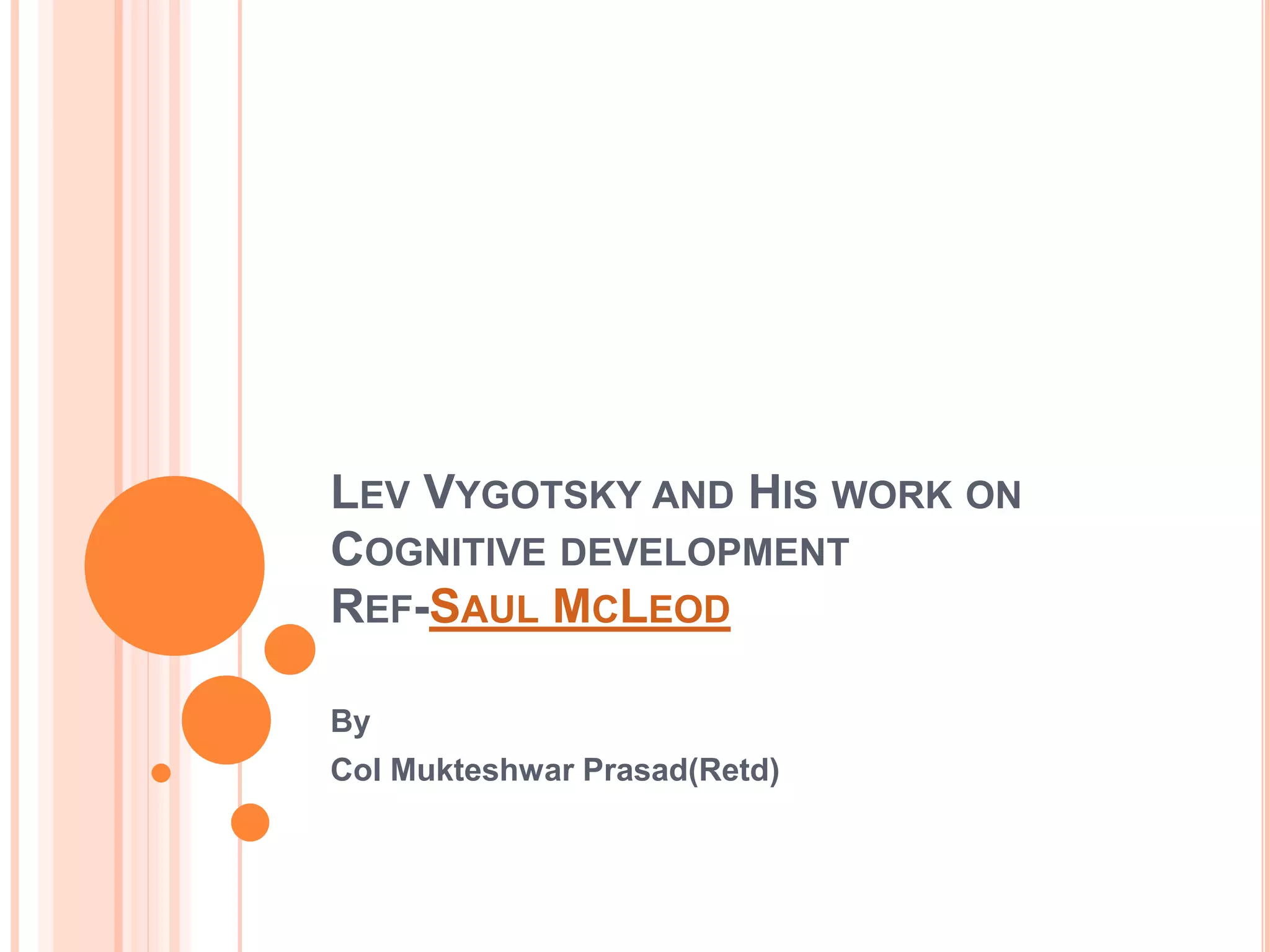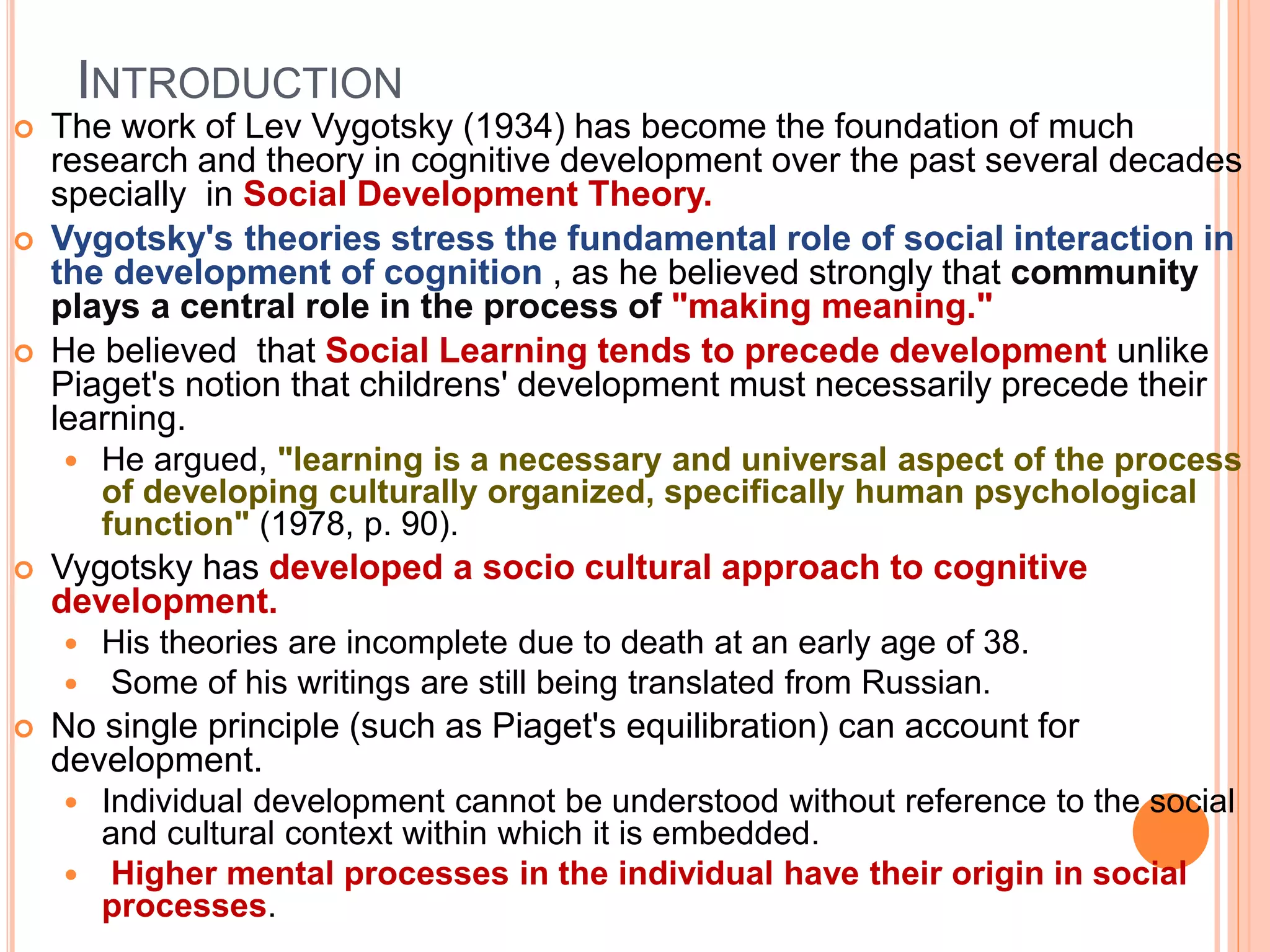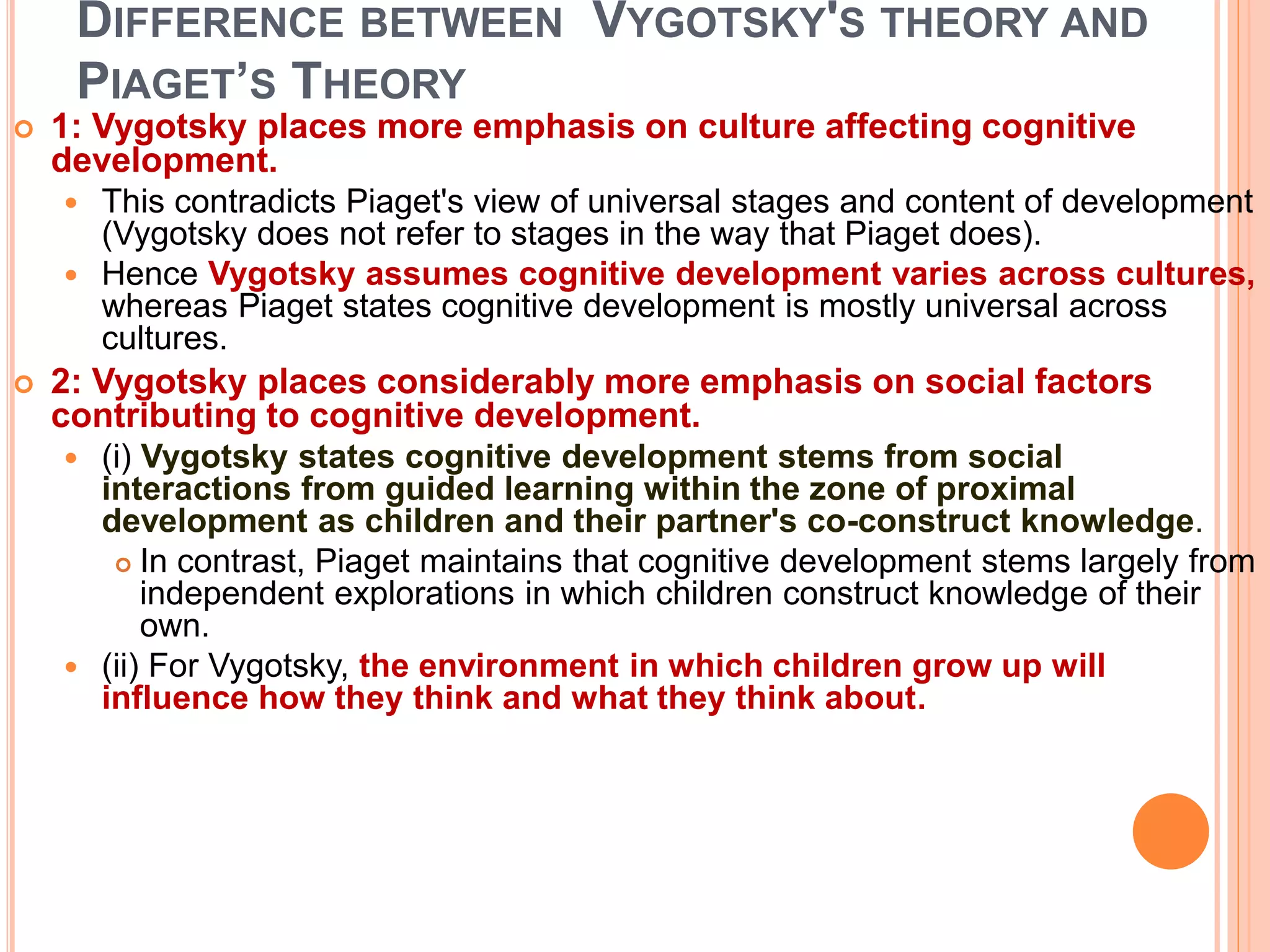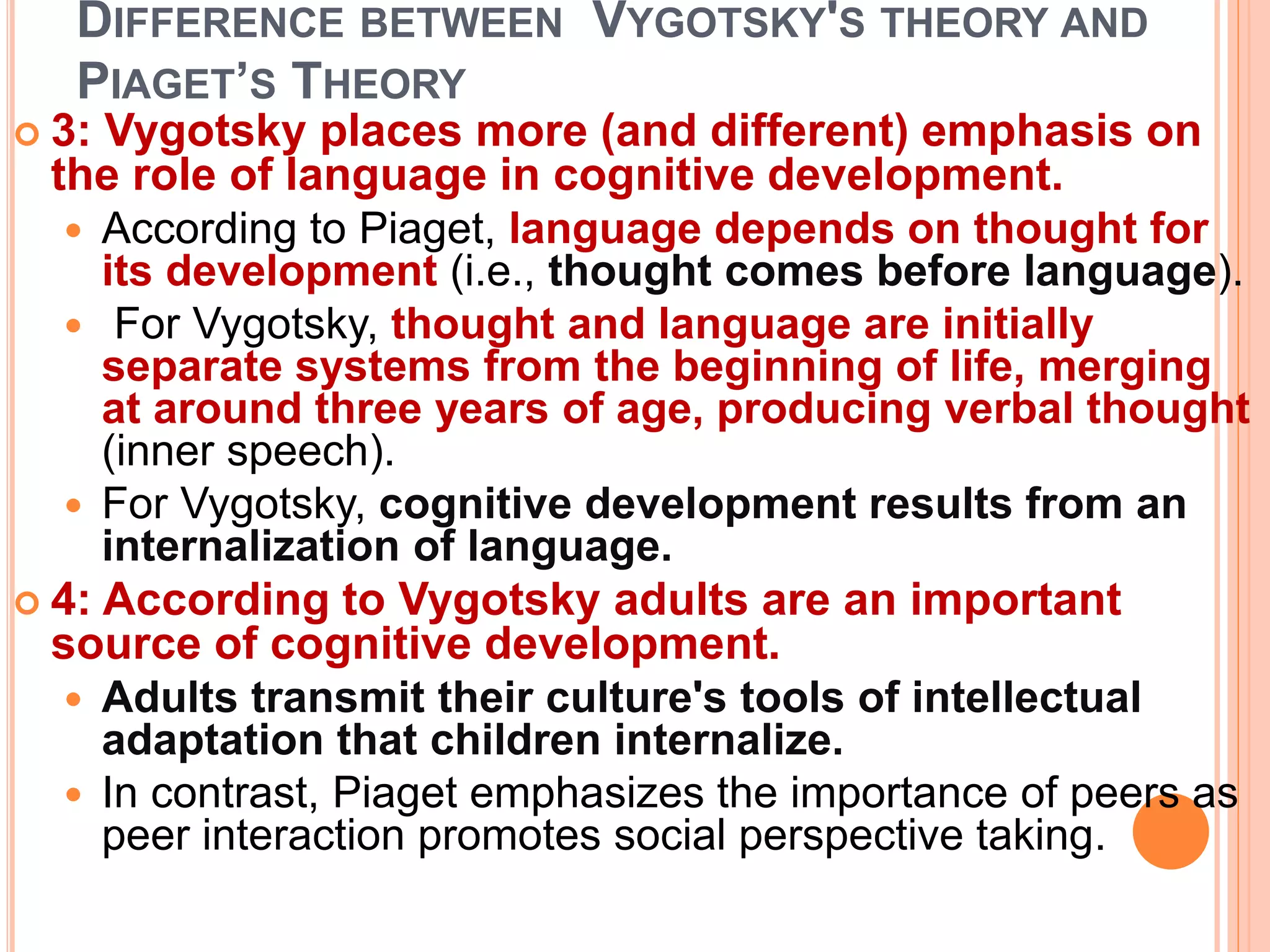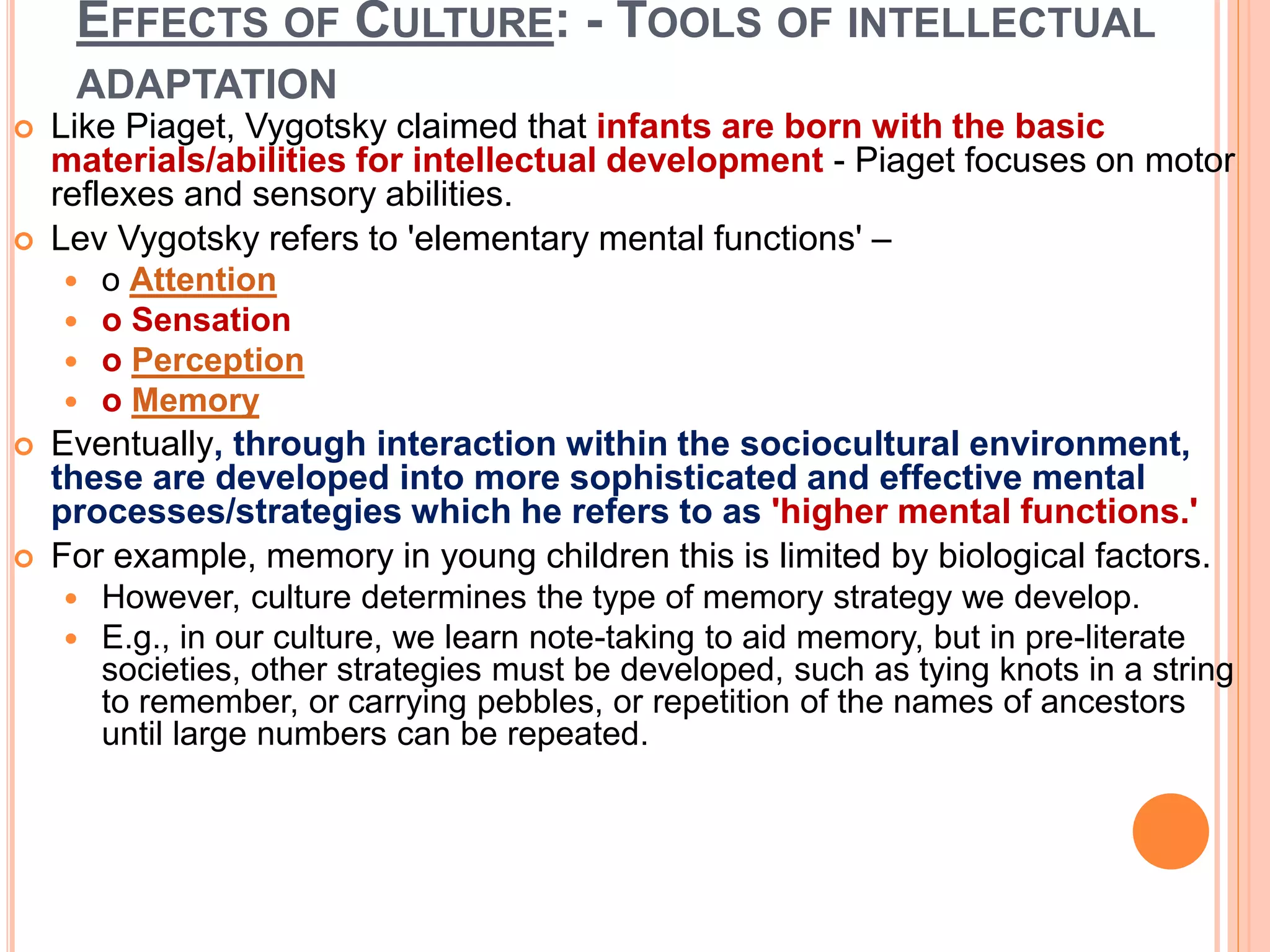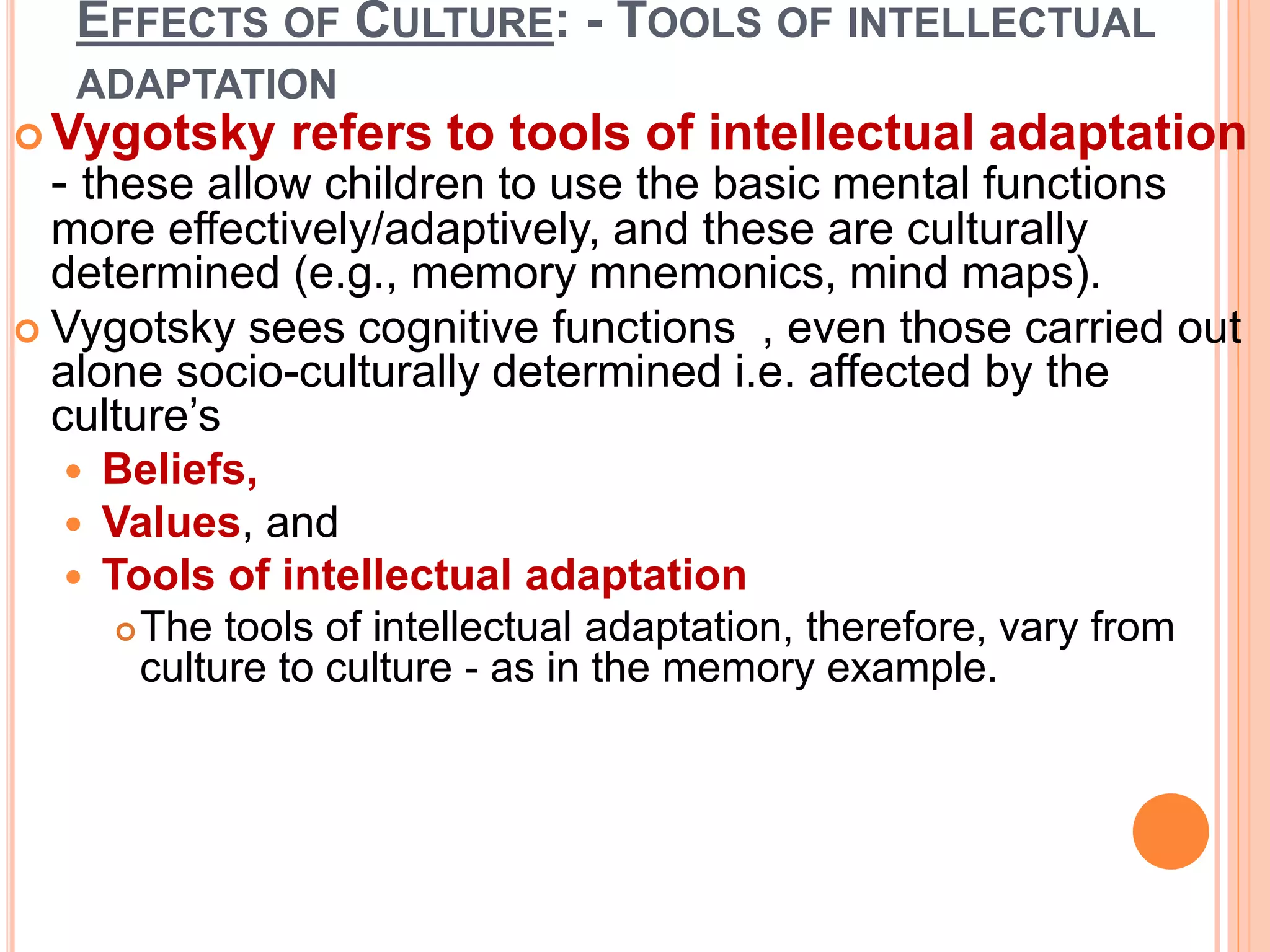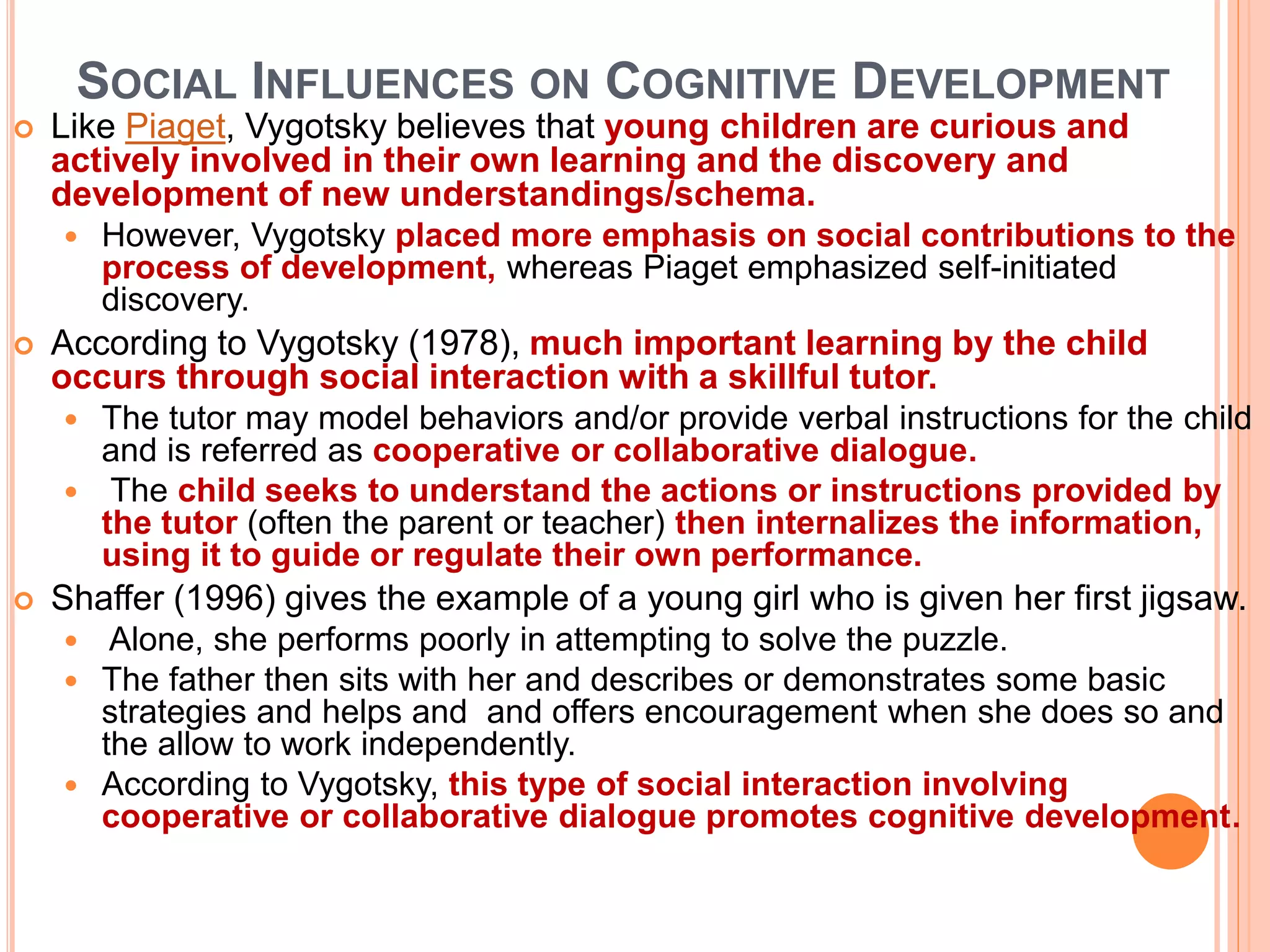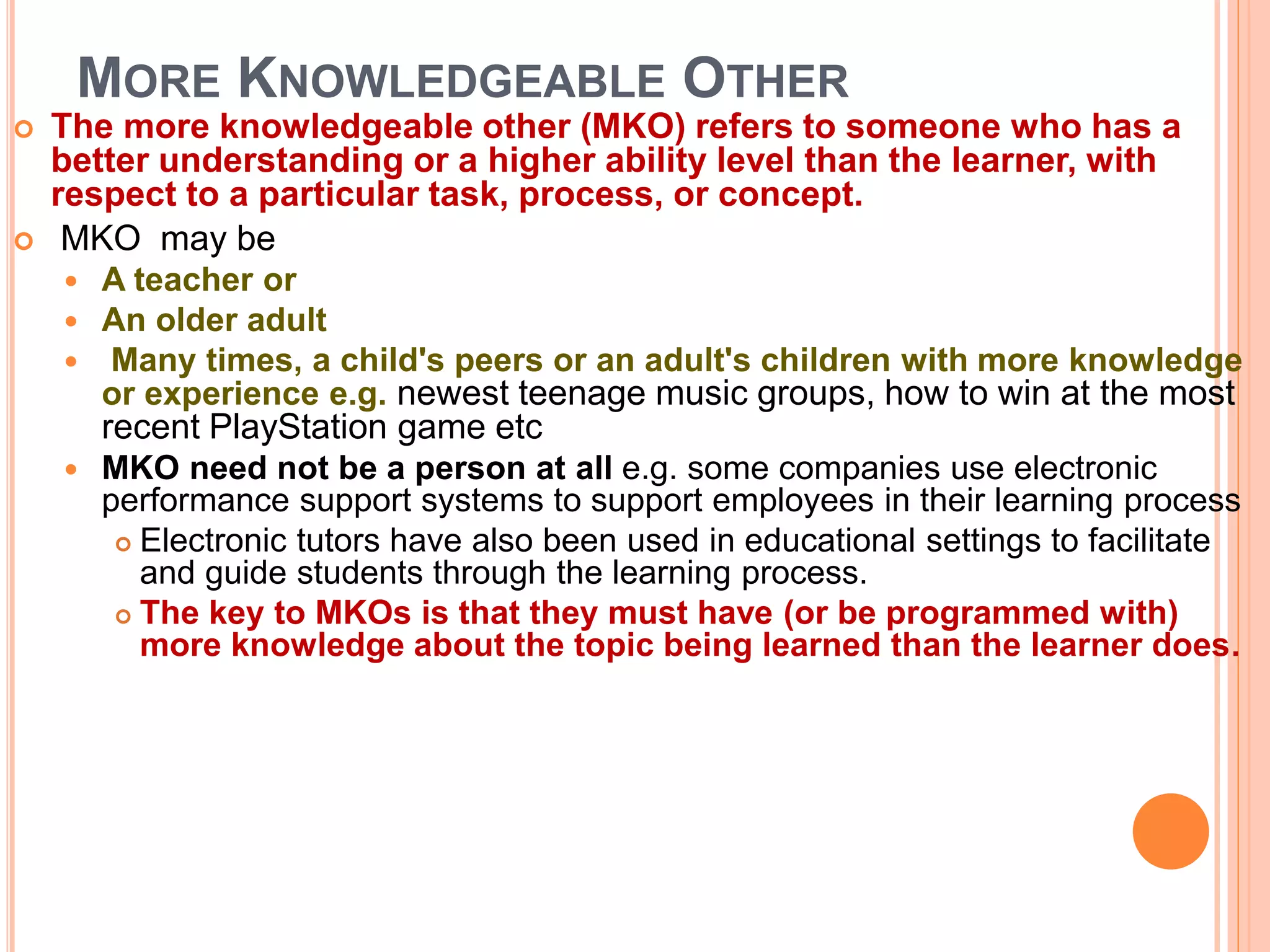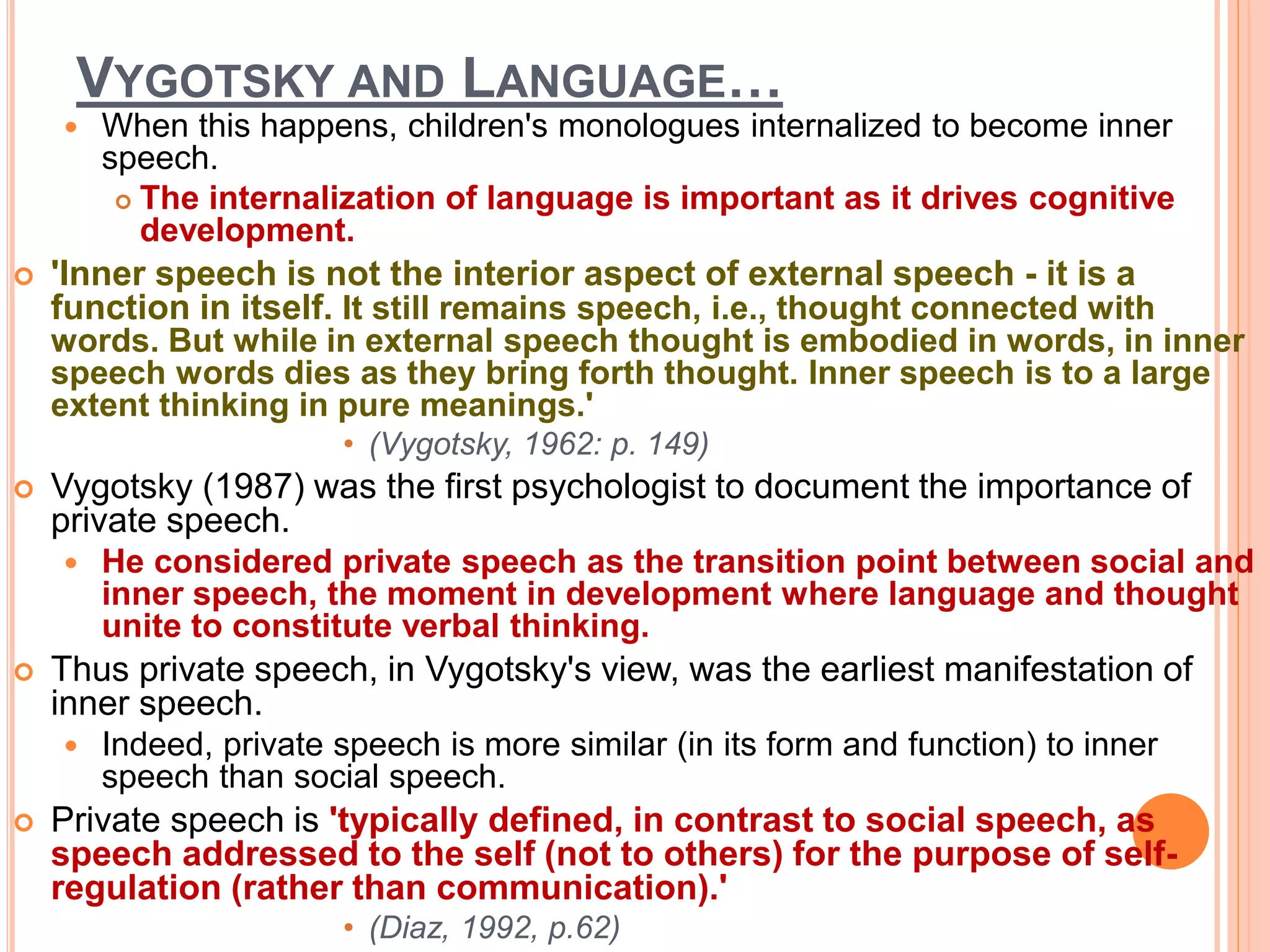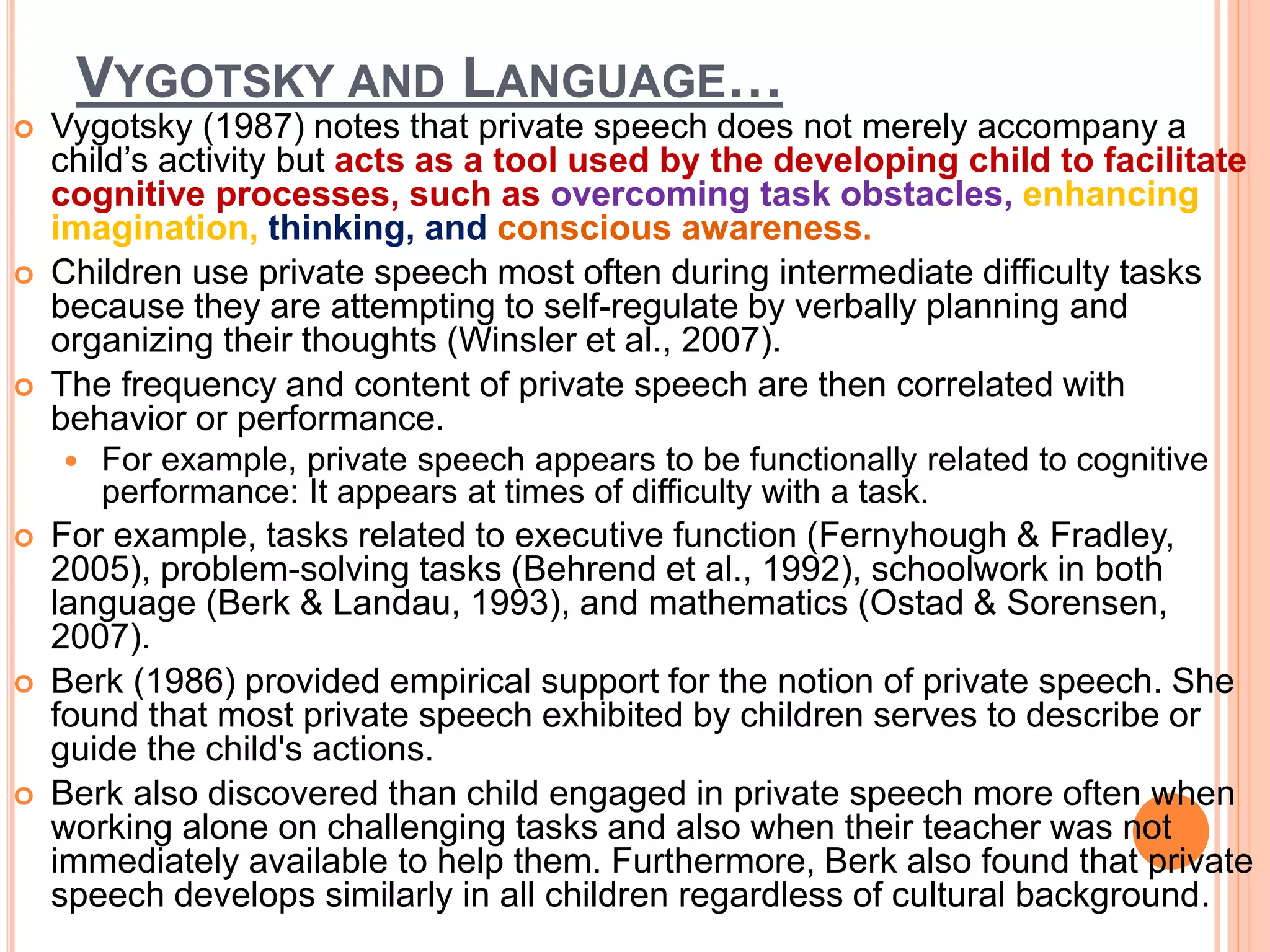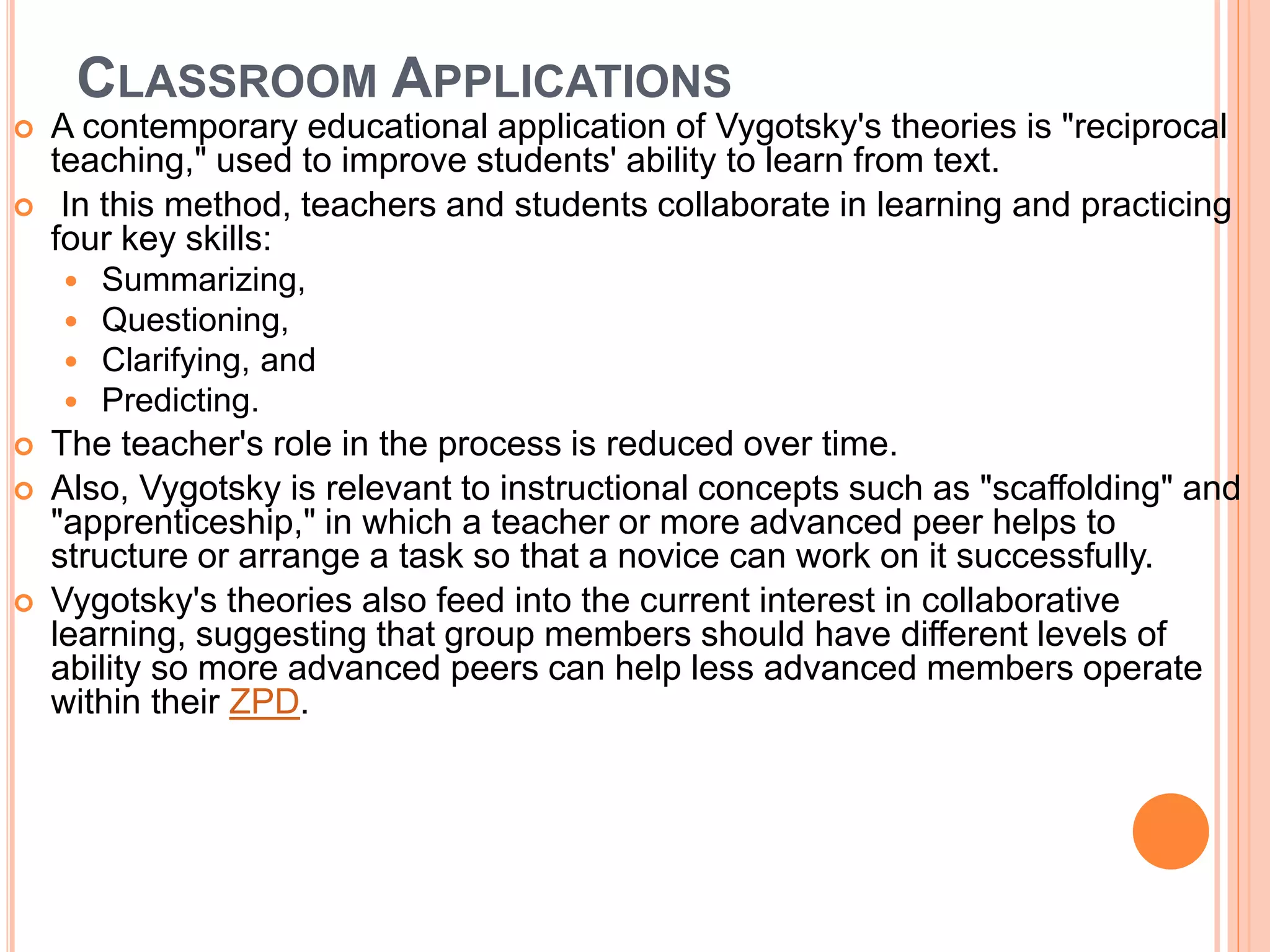Lev Vygotsky developed a sociocultural approach to cognitive development that emphasized the role of social interaction and culture. He believed that social learning precedes development, unlike Piaget who argued that development must precede learning. Vygotsky's theories stress that community plays a central role in how children develop cognition and make meaning. He introduced concepts like the Zone of Proximal Development and more knowledgeable other to describe how guided learning from social interactions helps children develop skills and strategies they can later use independently. Vygotsky argued that language and thought merge around age three and that internalizing language through private and inner speech drives cognitive development.
